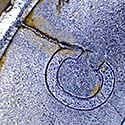Introduction

Like other cataloguing systems, "BWJM Numbers" describe the features of a coin.
BWJM Numbers help collectors describe a coin in a simple and concise way without having to share photos or describe the coin in a manner that may not be clear to others.
BWJM Numbers identify the following features:
- Variety of counterfeit (Camel Toe vs. Montreal Mint, Z Dollard or Double Canada)
- Year of coin
- Rotated dies
- Die clashes
- Obverse and reverse die cracks
- Other defects (eg: weak strike, excess die metal)
Each component of the code is separated by a hyphen for readability.
Codes Used
| Variety of Counterfeit |
|
|---|---|
| Year of Coin |
|
| Rotated Dies |
|
| Die Clashes |
|
| Obverse Die Cracks |
|
| Reverse Die Cracks |
|
| Weak Strikes |
|
| Excess Die Metal |
|
Examples
| CT02-OC2-A |
|
|---|---|
| CT05-RD025-E3 |
|
| MTL05 |
|
| CT06-1-C |
|
